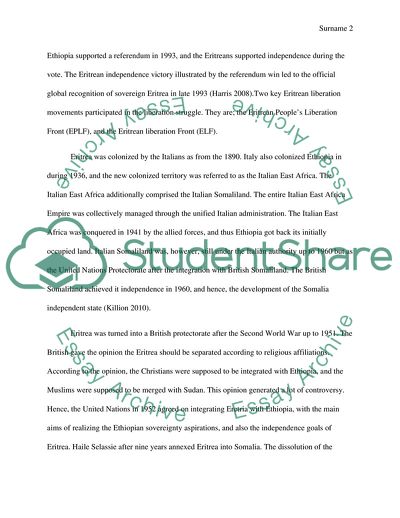Cite this document
(Cold War Historical Period: Eritreas Independence Struggle Essay Example | Topics and Well Written Essays - 2000 words, n.d.)
Cold War Historical Period: Eritreas Independence Struggle Essay Example | Topics and Well Written Essays - 2000 words. https://studentshare.org/history/1865945-research-selected-period-of-history-from-the-horn-of-africa
Cold War Historical Period: Eritreas Independence Struggle Essay Example | Topics and Well Written Essays - 2000 words. https://studentshare.org/history/1865945-research-selected-period-of-history-from-the-horn-of-africa
(Cold War Historical Period: Eritreas Independence Struggle Essay Example | Topics and Well Written Essays - 2000 Words)
Cold War Historical Period: Eritreas Independence Struggle Essay Example | Topics and Well Written Essays - 2000 Words. https://studentshare.org/history/1865945-research-selected-period-of-history-from-the-horn-of-africa.
Cold War Historical Period: Eritreas Independence Struggle Essay Example | Topics and Well Written Essays - 2000 Words. https://studentshare.org/history/1865945-research-selected-period-of-history-from-the-horn-of-africa.
“Cold War Historical Period: Eritreas Independence Struggle Essay Example | Topics and Well Written Essays - 2000 Words”. https://studentshare.org/history/1865945-research-selected-period-of-history-from-the-horn-of-africa.


